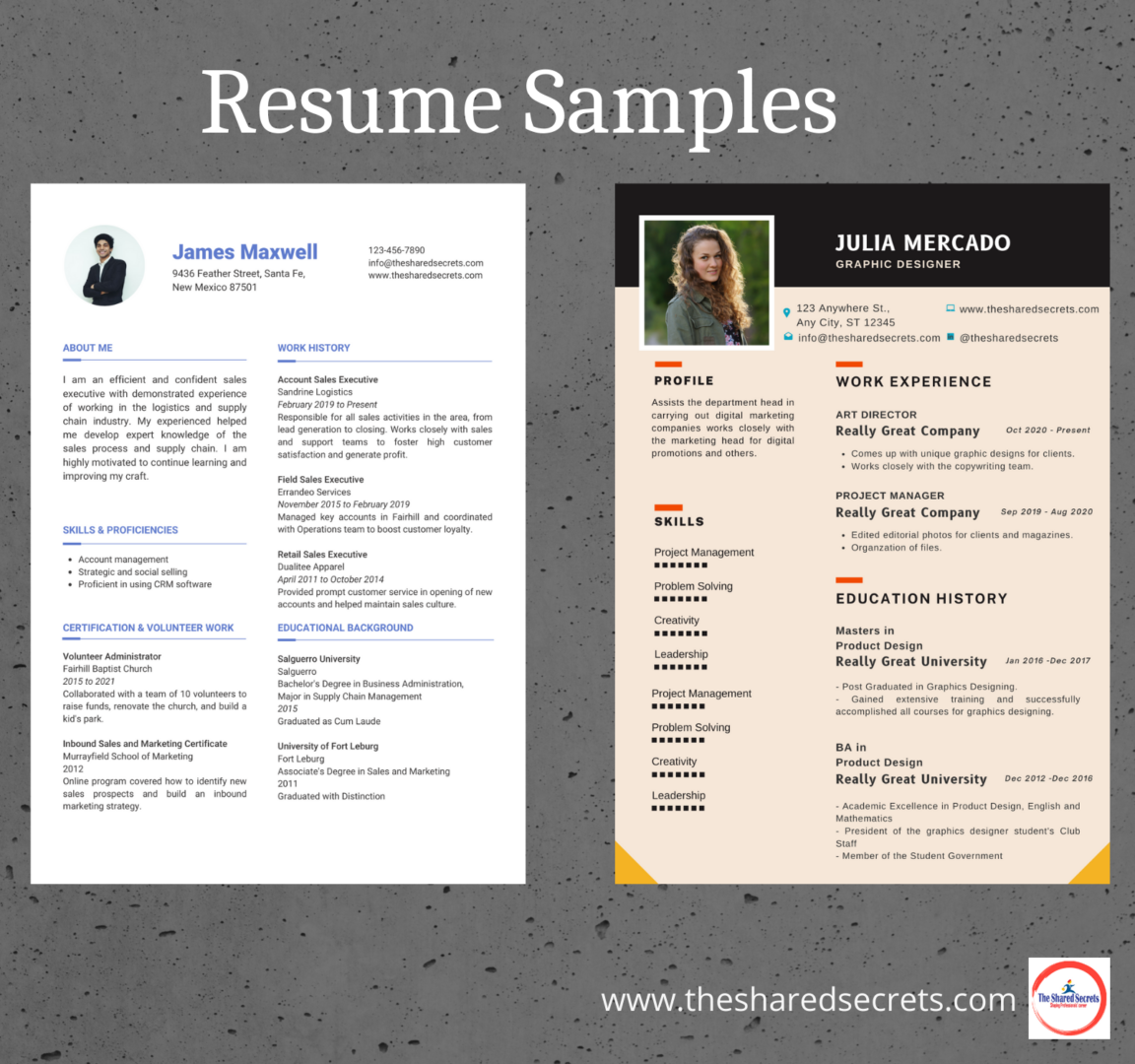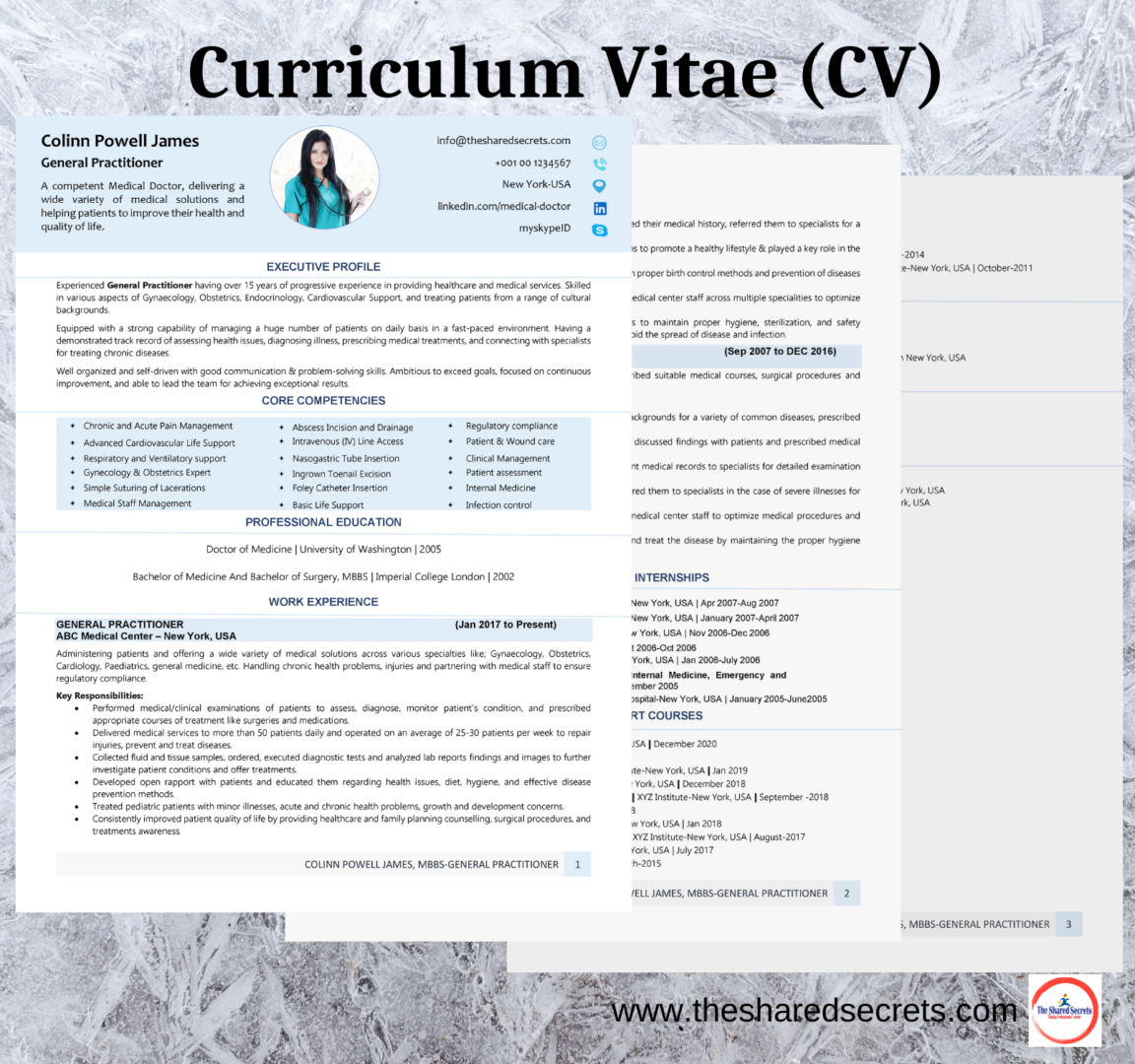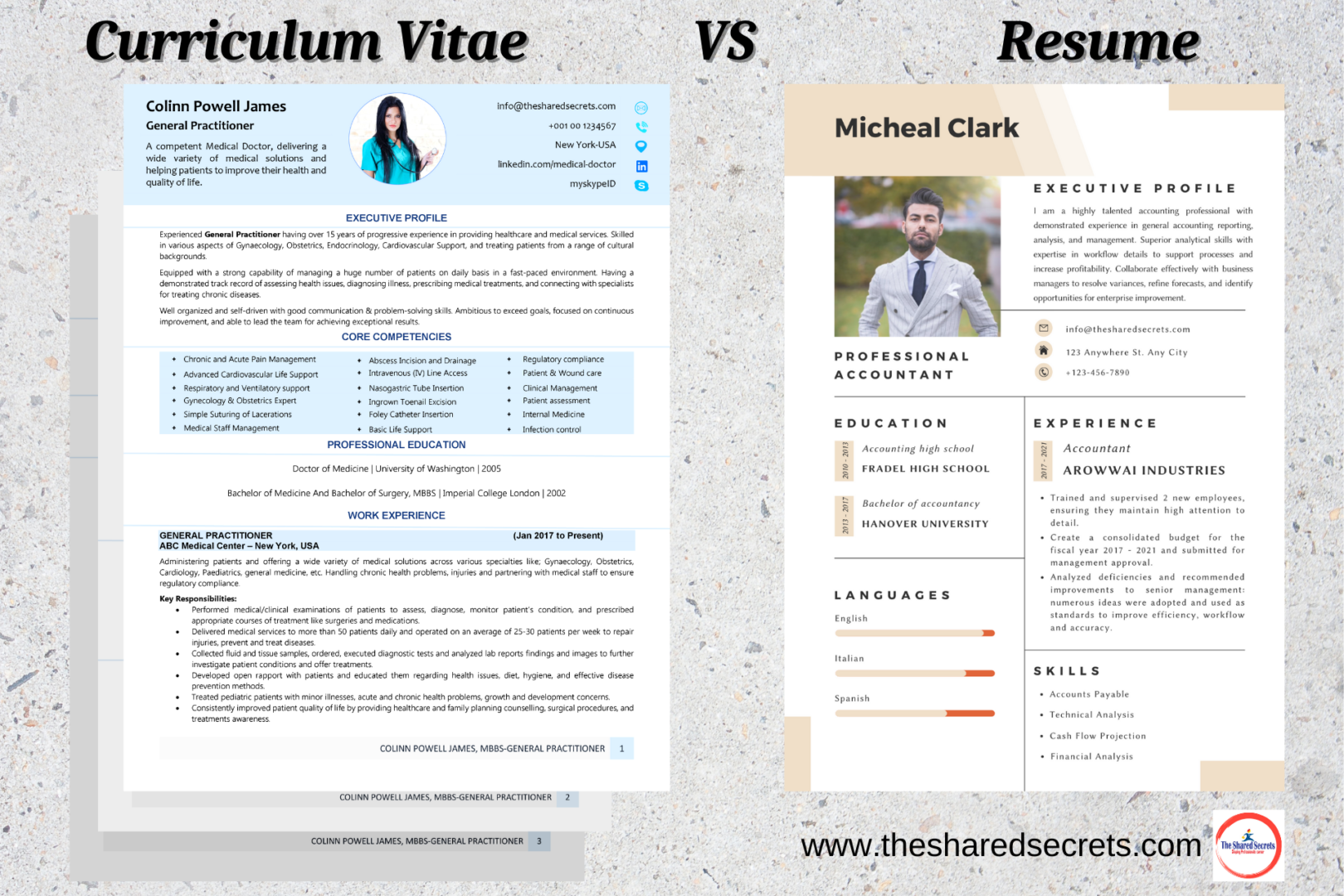What are the differences between a resume and a CV? Some people think both are the same documents and use the terms interchangeably but these two documents are not the same and have some diverse differences.
Resumes and CVs are used in job applications. We can consider them as the first face of job-seekers that land in the employer’s inbox. These documents are used to covey the candidate’s professional value and eligibility for the potential job. Job seekers must know the differences between them, their purpose, and when they can use a resume or CV as a job application.
In this article, we’re going to discuss in detail:
- What is a resume?
- What to include in a resume?
- What is a CV (Curriculum Vitae)?
- What to Include in Curriculum Vitae (CV)?
- Basic differences between a resume and a CV?
- When to use a resume or a CV?
What is a resume?
The term “Resume” originates from the French word “Résumé”, which means “to summarize,” or “sum up”.
A resume is a to-the-point document shaped for the purpose of applying to a specific job. It provides a concise overview of the candidate’s educational background, certifications, professional work experience, achievements, and relevant skills.
Typically, a resume is kept as short as possible up to one page or a maximum of two pages depending on the experience level and relevant detail. In the resume, only the most important aspects of a candidate’s experience, qualifications, and skills are mentioned that are relevant to the job he/she is applying for.
Similar to a CV, a resume is also created in a reverse-chronological format listing the most recent work experience and relevant detail first.
Relevant Article: What Does a Professional Resume Should Have to Trigger the Interview Call?
What to include in a resume?
Generally, a resume features only an individual’s information that relates directly to the job requirements. A good resume also outlines pivotal contributions a professional made in his previous jobs and displays how his core competencies and soft skills can add value to the position he is applying for.
Mostly, a good resume can contain the following components.
• Candidate’s Full Name
• Job Title or Headline
• Contact information
• Executive Profile or Resume Summary
• Contributions/Achievements
• Work Experience
• Education
• Relevant Core Competencies
• Languages
• Professional Certifications
• Short Courses and Training

What is a CV (Curriculum Vitae)?
The term CV is an abbreviation for the Latin word “Curriculum Vitae” which means “the course of an individual’s life”.
A CV is a detailed and comprehensive document that describes the candidate’s career path step-by-step. It includes all sorts of individual’s personal and professional information like; academic background and experiences, soft skills, competencies, accomplishments, research, publications, projects, awards, honours, interest, hobbies, etc.
Mostly, CVs are used by candidates seeking fellowships, medical roles, research, and academic positions but nowadays CVs are used for all types of jobs.
There are no specific length requirements or rules of thumb about a CV length. It can range from 2 to 10 pages or even more depending on the amount of experience, career journey, and amount of information available.
What to Include in Curriculum Vitae (CV)?
Curriculum Vitae (CV) outlines extensive relevant details about an individual, to represent him in front of employers as a potential candidate. Typically, CVs are crafted in a reverse-chronological order presenting the most recent job first.
Mostly, a CV contains the following components.
• Candidates’ Full Name
• Contact Information
• Professional Title or Headline,
• Executive summary or Objective
• Core Competencies
• Work Experience
• Teaching Experience
• Education
• Professional Certifications
• Internships or Apprenticeships
• Training & Courses
• Projects
• Volunteer Work Experience
• Research
• Soft Skills
• Conferences
• Publications
• Languages
• Grants
• Memberships & Affiliations
• Hobbies, Interest, Extracurricular Activities
• References

Relevant Article: How to Stand Out in a Competitive Job Market?
What are the basic differences between a resume and a CV?
The main differences between a resume and a CV (curriculum vitae) are length, purpose, function, and overall content. Though resumes and CVs are used interchangeably for job applications but actually, both the documents are not the same.me.
| Basis for Comparison | Resume | Curriculum Vitae (CV) | |
| Length | A Resume is a concise document that consists of 1 to 2 pages. | A CV is a comprehensive document and there is no length limit for it. Normally, it consists of 2 to 3 pages or even more. | |
| Purpose/Function | Mostly, a resume is used for regular industry positions. | A CV is used for academic positions, research roles, programs, fellowships, scientific roles, etc. | |
| Content | A resume represents only the relevant experience, skills, qualifications and achievements of the candidates. | It includes all types of academic qualifications, experience, skills, research, publications, achievements, etc. | |
| Customization | Highly Customizable. Mostly, customized for each new role. | Generally, information remains the same. Only updated, if the new information is available. | |
| Geographic Location | In USA and Canada, employers preferred a resume. | In Asia, Middle East, Africa and EU a CV is preferred. | |
| References | Generally, Not Included | Included |
International differences between a resume and a CV based on geographic locations:
As we already know, what are the basic differences between a resume and a CV? It’s also very important to highlight the differences based on geographic locations because employers from different countries generally have specific preferences based on their requirements.
In some countries, employers expect to receive a resume and some requires a CV. Sometimes, people use the word Resume and CV interchangeably for the same document.
The following table can help you in understanding the differences between both documents based on employer preferences and geographic locations.
| Location | Resume VS Curriculum Vitae (CV) |
| North America | Mostly, a resume is used for job applications. A CV is used only for academic and research purposes. |
| South America | A resume is used for most job applications. A CV is used only for academic and research purposes. |
| Europe | CV is preferred and widely used for all jobs. But it is created in resume format. |
| Middle East | CV and Resume are considered the same documents and a tailored CV is widely used for all types of jobs. |
| South Asia | CV and Resume are considered the same documents and CV is widely used for all types of jobs with more biodata. |
| Central Asia | CV and Resume are considered the same documents and CV is widely used for all types of jobs. |
| Africa | CV and Resume are considered the same documents and CV is widely used for all types of jobs. |
| Australia | CV and Resume are synonyms and used interchangeably. Mostly a resume format is used for CV as well. |
Now we know the basic differences between a CV and a resume. We can easily judge, when to use a CV and when we can use a resume for sending job applications.
When a Candidate should use a CV and Resume?
A job seeker should consider the geographic locations, employers preferences and job requirements when deciding whether to submit a CV or resume.
A Curriculum Vitae (CV) comprises multiple pages of comprehensive information about a professional’s education, experience, skills, achievements, research work, publications, etc. Therefore, candidates should use a CV for academic, research, scientific roles, targeted job positions, specialized job roles that require specific proficiencies and requirements.
A resume is a very concise document containing only one or two pages. A-One page resume gives a quick overview of the candidate profile and is helpful while determining the candidate’s suitability for the job in just a few seconds. The resume is widely used for regular jobs, non-academic positions and non-researched-based roles.
In USA and Canada markets, mostly a resume is used but for the rest of the world, a CV is preferred with tailored or resume format.
Conclusion:
In a nutshell, a CV represents the whole course of an individual’s career and a resume is a summarized form of a professionals career path. The key differences between both documents are their length, purpose and contents.
A resume is just one or a maximum of two pages of documents that are typically used for regular jobs in the USA, Canada and some other parts of the world. As the CV is a very detailed document, it is widely used for expert roles, academic, research and scientific job.
___________________________________________________________________________________________
We hope this article will help in understanding the differences between a CV and a resume. For more detail and queries, please leave a comment. We will answer all your questions!

